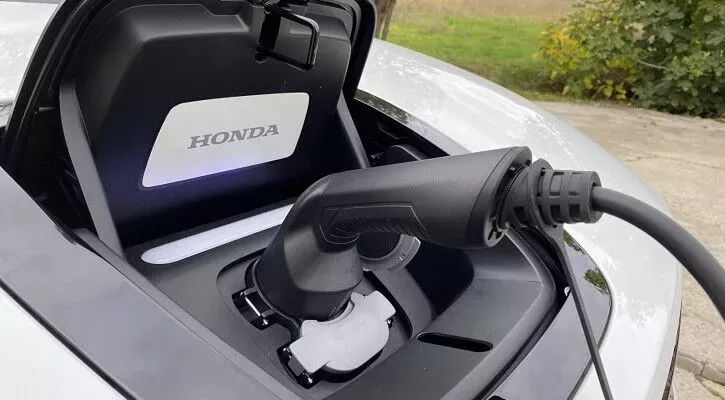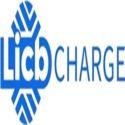Notifications

10 minutes, 30 seconds
-108 Views 0 Comments 0 Likes 0 Reviews

Introduction: Charging into the Future
As a leading EV chargers manufacturer in China, LiCB Charge offers reliable AC and DC electric vehicle charging stations along with comprehensive charging solutions.
As electric vehicles (EVs) continue to gain momentum around the world, the infrastructure for charging has become a critical component in the transition to sustainable transportation. Whether you're a seasoned EV driver or just starting your journey toward greener driving, understanding the different EV charging modes is key to maximizing efficiency, safety, and convenience.
Among the various charging options, Mode 3 charging stands out as the most widely adopted method for both public and residential use. Found in everything from public parking lots to shopping center stations and private homes, Mode 3 offers the perfect balance between speed, safety, and accessibility.
In this article, we’ll explore what Mode 3 charging is, what makes Mode 3 charging cables special, how it compares to other modes, and why it plays such a vital role in today’s EV landscape.
Mode 3 charging refers to a standardized method of charging electric vehicles using dedicated EV charging stations. These stations deliver AC power to the vehicle through a smart, connected cable system that ensures communication between the EV and the charger.
Unlike Mode 1 or Mode 2 charging—which rely on a basic connection to a household power outlet—Mode 3 charging is purpose-built for EVs, offering enhanced safety features and faster charging speeds. It's the most common setup used in public charging infrastructure and is rapidly becoming a preferred option for home installations as well.
This mode requires a Type 2 (Europe and many parts of the world) or Type 1 (primarily in North America) plug and includes an in-cable control box or smart electronics within the charging station to manage the flow of electricity and ensure a safe connection.
A Mode 3 charging cable is the physical link between your EV and a dedicated charging point. It’s more than just a cable—it’s a critical component of the charging system that provides real-time communication between the vehicle and the charging station.
Two-way communication: The cable enables smart communication to ensure charging is optimized for your EV's battery and complies with grid safety standards.
Enhanced safety protocols: Built-in protections guard against electrical surges, overheating, and ground faults.
Faster charging: Mode 3 cables can support charging power levels up to 22 kW (depending on the station and vehicle), far outpacing basic household charging methods.
Compatibility: These cables are typically compatible with Type 2 or Type 1 connectors, making them suitable for a wide range of EV models and stations.
So, why is Mode 3 charging such a popular choice among EV drivers, governments, and private installers? Let’s dive into the benefits.
Compared to Mode 1 or Mode 2, Mode 3 charging is significantly faster. While the actual speed depends on factors like the vehicle’s onboard charger, power supply, and cable rating, Mode 3 can reduce charging time by several hours.
A standard 7.4 kW Mode 3 charger, for instance, can deliver about 30–40 km of range per hour.
A 22 kW charger can triple that. This makes it ideal for workplaces, malls, or homes where EVs are parked for extended periods.
Mode 3 chargers are equipped with multiple layers of protection:
Automatic power shut-off in case of overheating.
Detection of electrical faults such as ground leakage.
Secure, lockable connections to prevent accidental unplugging.
Because they are hardwired into a building’s electrical system, Mode 3 setups are also subject to professional installation, ensuring that local safety codes are met.
Today, Mode 3 chargers form the backbone of public EV charging infrastructure. You’ll find them:
At supermarkets and shopping malls
In commercial parking garages
Alongside highways
In residential buildings and private homes
As urban planning increasingly prioritizes electric mobility, Mode 3 charging stations are being installed across cities and towns at a rapid pace.
While Mode 3 charging offers a robust and flexible solution, it’s not without its challenges. Let’s look at a few potential drawbacks.
Installing a Mode 3 charging station at home or in a business facility can be costly. The charger unit itself can range from $500 to $1,500 or more, and professional installation can add another $500 to $2,000, depending on complexity.
However, this investment is often offset over time by:
Lower cost-per-charge rates
Increased property value
Future-proofing as EV adoption grows
Mode 3 charging requires a dedicated circuit and proper electrical infrastructure, which may not be readily available in older homes or buildings. Upgrading the electrical panel or installing a new line may be necessary, adding to the complexity.
Although Mode 3 charging is faster than basic options, it still falls short of the ultra-fast speeds offered by DC fast chargers (Mode 4), which can provide 80% charge in as little as 20–30 minutes. For long-distance travel or quick top-ups, Mode 3 might not be the most time-efficient choice.
Let’s break down the differences between the three most common EV charging modes:
| Feature | Mode 2 | Mode 3 | Mode 4 |
|---|---|---|---|
| Power Source | Household outlet | Dedicated AC charger | Dedicated DC fast charger |
| Charging Speed | Slow (up to 2.3 kW) | Medium (7.4–22 kW) | Fast (50 kW and up) |
| Installation | Plug-and-play | Requires electrician | Requires infrastructure |
| Safety Features | Limited | Advanced | Highest |
| Use Case | Emergency/home use | Public & home charging | Long-distance travel |
Mode 2: Best for occasional or emergency charging; very slow.
Mode 3: Ideal for daily use at home, work, or public stations; good balance of speed and safety.
Mode 4: Perfect for long trips or when you need a rapid top-up; usually found on highways or charging hubs.
Mode 3 charging is suitable for:
Urban and suburban EV drivers who park their vehicles for several hours at a time.
Homeowners looking for a safe and semi-fast solution for overnight charging.
Businesses offering EV charging as a perk to employees or customers.
Fleet operators managing electric taxis, delivery vans, or company cars.
Thanks to its versatility, Mode 3 meets the needs of most EV drivers, from everyday commuters to local delivery services.
When shopping for a Mode 3 cable, consider the following factors:
Connector Type:
Type 1: Used in North America and Japan
Type 2: Used in Europe and many other regions
Cable Length: Choose a length that gives you flexibility without excess slack. Most cables range from 3 to 10 meters.
Power Rating: Select a cable rated for the maximum power output of your EV and charging station. Typical options include 16A (single-phase), 32A (single/three-phase), or 22 kW.
Durability: Look for:
Weatherproofing (IP ratings)
Reinforced connectors
Tangle-free design
Carrying case or wall mount
As EV adoption accelerates, Mode 3 charging cables and stations are becoming the go-to choice for everyday charging needs. They strike a smart balance between cost, convenience, safety, and speed—making them ideal for homes, businesses, and public spaces.
While not as fast as DC charging, Mode 3 is more affordable, more accessible, and more practical for daily use. It also ensures that your vehicle is charged safely and efficiently, extending battery life and improving overall performance.
Whether you're installing a home charging solution or simply plugging in at your local supermarket, understanding Mode 3 charging gives you the confidence to charge smarter and drive further.Know more about Google SEO Directory
China EV Chargers EV Charger Manufacturer Smart EV Chargers Electric Car Chargers Electric Vehicle Chargers Electric Car Charging Stations

